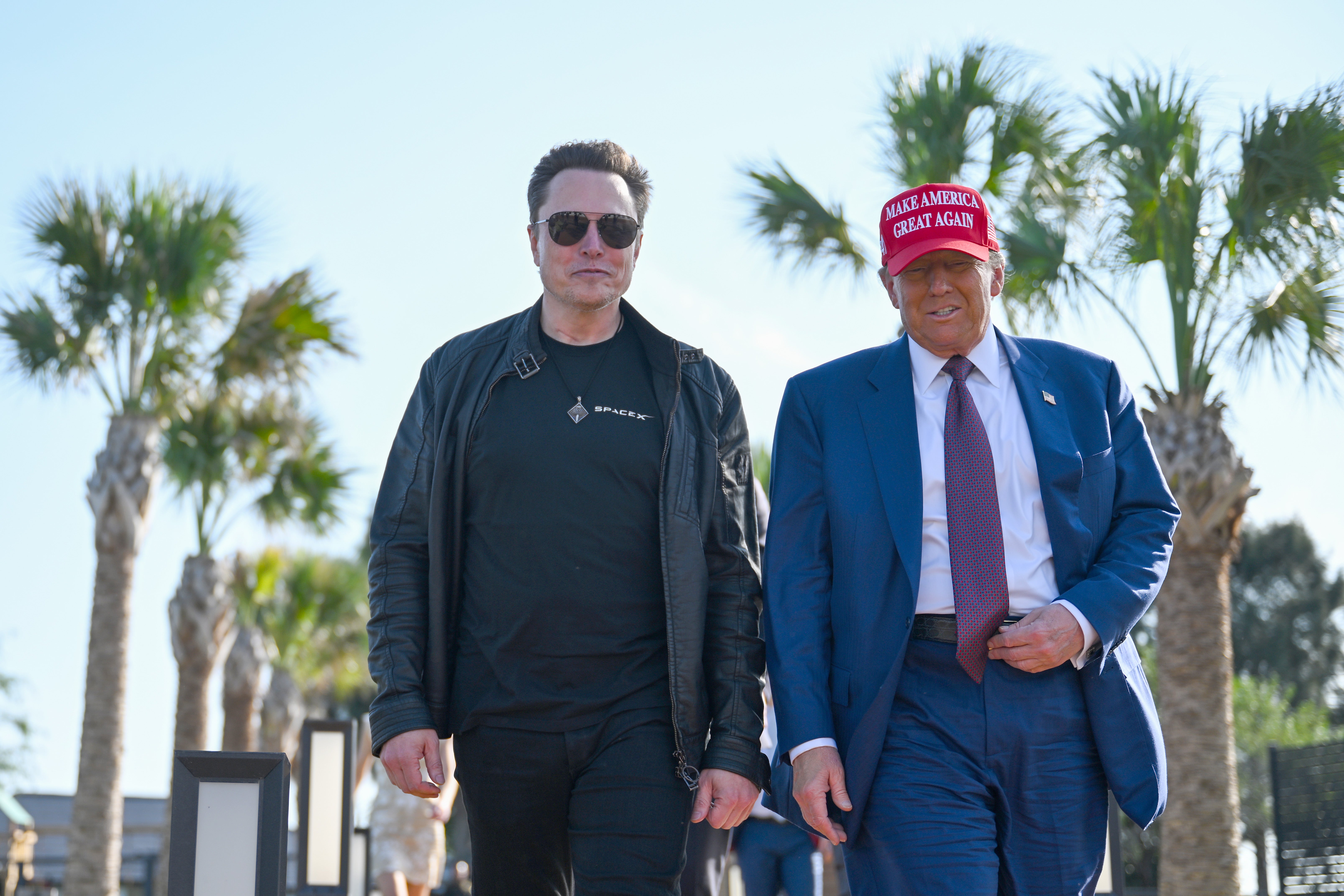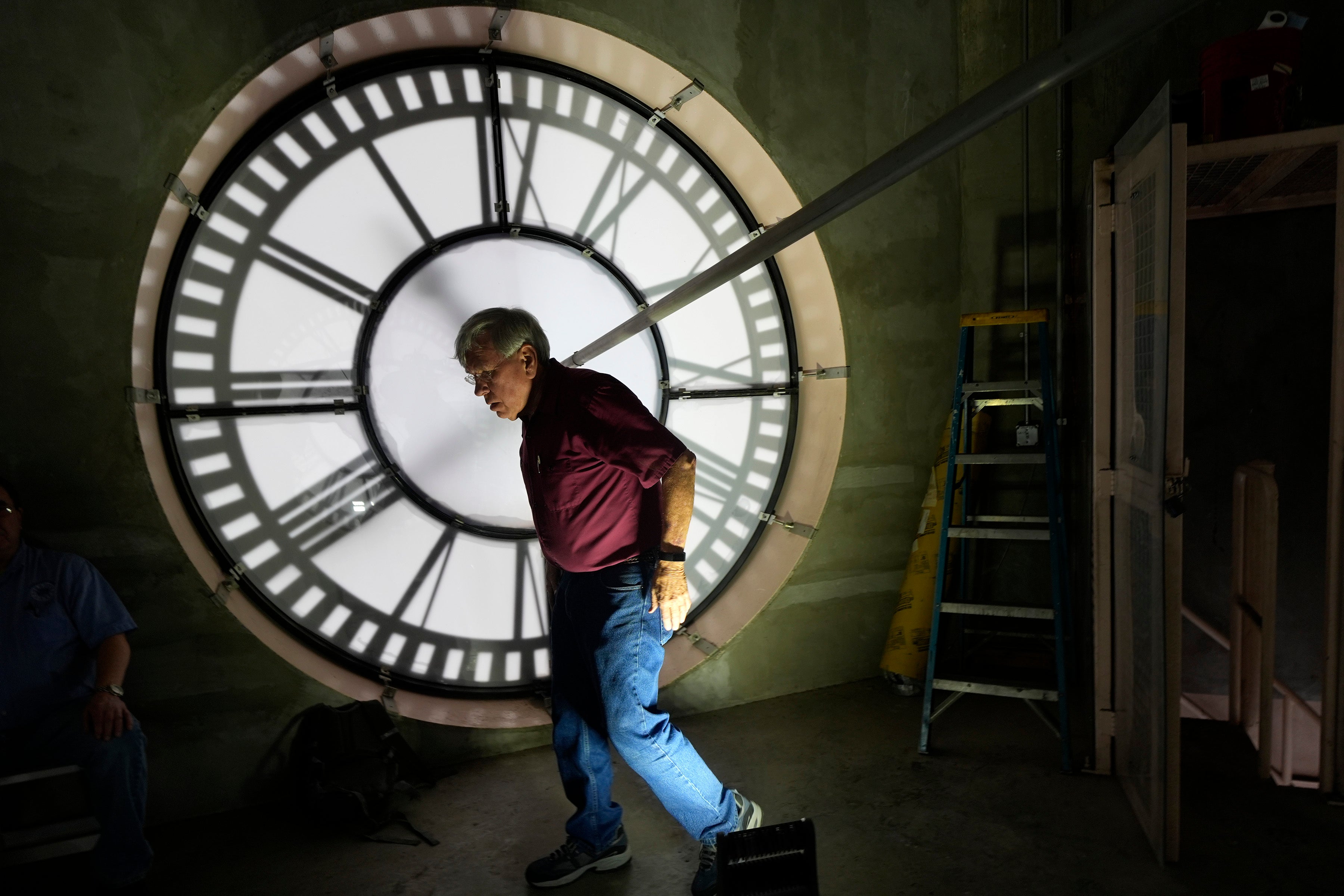Elon Musk wants to abolish daylight saving time, and it might actually be a good idea
After 58 years of springing forward and falling back, evidence is mounting that it’s bad for our bodies, reports Io Dodds


Your support helps us to tell the story
From reproductive rights to climate change to Big Tech, The Independent is on the ground when the story is developing. Whether it's investigating the financials of Elon Musk's pro-Trump PAC or producing our latest documentary, 'The A Word', which shines a light on the American women fighting for reproductive rights, we know how important it is to parse out the facts from the messaging.
At such a critical moment in US history, we need reporters on the ground. Your donation allows us to keep sending journalists to speak to both sides of the story.
The Independent is trusted by Americans across the entire political spectrum. And unlike many other quality news outlets, we choose not to lock Americans out of our reporting and analysis with paywalls. We believe quality journalism should be available to everyone, paid for by those who can afford it.
Your support makes all the difference.We've all been there: you wake up dazed and woozy like you've lost an hour's sleep, but the clock says nothing is wrong. Then you miss a meeting because you forgot to manually adjust your watch.
Now Donald Trump's new bureaucratic slasher-in-chief Elon Musk says he wants to put an end to all that by getting rid of daylight saving time (DST).
"Looks like people want to abolish the annoying time changes!" said the prolific US government contractor last week in response to a poll on his social media site, X.
Although Musk's tweets are not law, he is the incoming co-leader of Trump's new budgetary advisory panel, and his co-leader Vivek Ramaswamy has backed the idea — as did Trump several years ago.
Perhaps more importantly, Musk appears to wield considerable influence over the president-elect as self-proclaimed "first buddy", having reportedly sat in on calls with corporate and foreign leaders.
Let’s put aside for a moment the enormous potential conflicts of interest, or even opportunities for corruption, that this relationship entails. Abolishing DST might actually be one of the more popular ideas Musk’s DOGE committee ends up recommending. It would certainly be more popular than cutting social security or “deleting” the USA’s national consumer protection agency.
So what would it actually mean, and is it a good idea?
Car crashes, heart attacks, and workplace injuries
Contrary to popular myth, daylight saving time in the United States has never been about farmers.
The basic idea of changing the clock depending on the season is about as old as clocks. In most places on earth, the sun rises far earlier in summer than it does in winter; the Romans dealt with that by varying the length of an hour to suit the day.
Modern DST was first proposed in New Zealand in 1895, and early versions were adopted by Germany in 1916 and by the USA in 1918. These were emergency measures, implemented during the First World War to save scarce fuel by exploiting summer's early dawn. The USA did the same again in WW2.
In peacetime, the rationale for DST has often shifted, but it's usually based on the simple idea that we should set our clocks to give people as much daylight as possible. It wasn't until 1966 that DST was standardized across the country. As usual in America, corporate lobbyists were heavily involved, since some industries – such as retail and fast food – apparently enjoyed better business during the summer shift.
Yet a missed meeting is the least of DST's alleged drawbacks. Research suggests that all this springing forward and falling back actually disrupts our circadian rhythms, damaging our sleep quality and potentially our health. Some studies have found that this increases your risk of a heart attack by as much as 10 percent – though other research disagrees.

Researchers have also found evidence that traffic accidents, collisions with animals increase sharply after the end of DST, and workplace injuries rise noticeably after DST starts each year.
So surely ending DST should be a no-brainer? Or perhaps doing the reverse and making DST permanent, so that we lose some light from our winter mornings but gain some in our summer evenings (which, let's face it, most of us are more equipped to enjoy)?
A majority of Americans reportedly support the idea, and the length of DST has slowly crept upward so that it today spans eight months out of twelve.
Yet the USA did try to make daylight saving permanent in 1974. Once again, it was designed to save fuel – this time in the face of a worldwide energy crisis driven by oil shortages and soaring prices. It didn't go well.
‘Daylight saving time is unnatural and unhealthy’
"It's the end. I can't cope any more. The comet, the energy crisis, now darkness. I'm just staying in bed,” one Long Island mother told The New York Times in 1974 when permanent DST came into effect. The Times itself called the event “a new Dark Age”.
Many Americans hated it, with numerous complaints about children being forced to walk to school in the dark. Reports of kids being killed in pre-dawn traffic accidents sparked public and political outrage.
This effect would be even worse for states in the middle of the USA, whose winter sunrise wouldn’t be until 9a.m. in some cases.
There is also some scientific evidence that simply having more light in the evening and less in the morning – rather than changing the clocks – is itself bad for our health, because it’s not the kind of daily rhythm we were evolved to thrive on.
“Americans are split on whether they prefer permanent daylight saving time or permanent standard time. However, my colleagues and I believe that the health-related science for establishing permanent standard time is strong,” wrote neurologist Beth Ann Malow in 2022.
“Based on abundant evidence that daylight saving time is unnatural and unhealthy, I believe we should abolish daylight saving time and adopt permanent standard time.”

To be clear, Musk and Ramaswamy didn’t say whether they would be in favour of making DST permanent or simply ending it entirely, so the devil would be in the details.
Over the past few decades there have been repeated bipartisan efforts to make DST permanent. All have failed, which indicates the biggest barrier for Musk and Ramaswamy's plan.
DOGE doesn’t have any formal power, instead being simply an advisory body that will – in perhaps as long as two years’ time – recommend certain measures to Congress. Although House Republicans are backing this up with a special subcommittee on government waste, chaired by Marjorie Taylor Greene, congressfolk in general are often a recalcitrant lot.
So even if this turns out to be a priority for Musk and Ramaswamy, there are multiple hurdles that must be cleared to make it actually happen.
In the meantime, their suggestion might best be thought of as an appealing digression from what appears to be DOGE’s main purpose: gutting the US federal government via shock-and-awe mass firings, much as Musk did with the social network formerly known as Twitter.
Join our commenting forum
Join thought-provoking conversations, follow other Independent readers and see their replies
Comments